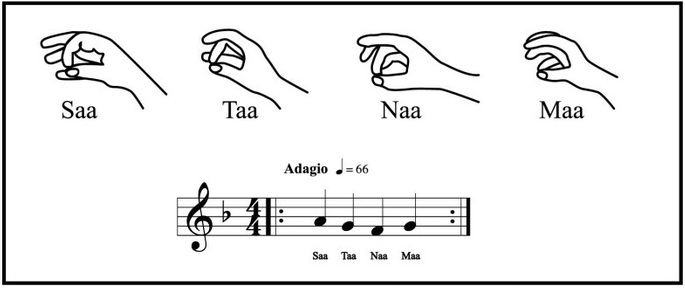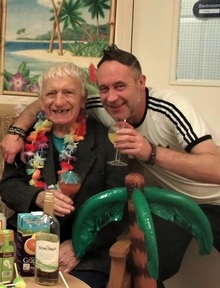Meditation: 'The effects of Kirtan Kriya are instant - all care homes should do it'
Lulu Milton has been practising meditation at her mother’s care home for three and a half years. Or she did, until her mother died. Three months later, she tells carehome.co.uk why she wants to return to practice the meditation technique Kirtan Kriya with residents.

“Mum was 79 when she died on 5 June. She had quite advanced dementia. I needed to take a break away from Mum’s home. She used to meditate at first but not later.
"I've decided it's time I went back. A lady in my class would come every week and sit with her hands in prayer. It used to make her cry. Even if you are not chanting, people at the home felt relaxed."
Ms Milton already has a day job running an aerial business but it is her voluntary work running meditation classes that has been in demand at Cedar Lodge Care Home in Taunton.
Kirtan Kriya is a mediation technique used in Kundalini yoga, which is intended to stimulate the senses and parts of the brain. It involves a combination of chanting and finger movements.
'I started meditation in a field with Buddhists'
“I started meditation 10 years ago in a field with Buddhists. After Mum moved to the care home, a member of staff asked me if I would run a session.
"I didn’t know at first if I could do it as people at the care home had dementia. I wondered how they would connect.”
Ms Milton also noticed it is "difficult to have some quiet time” when surrounded by lots of people in a care home. With half a dozen residents in her weekly class plus some staff, “we would ask people if they wanted to join in and then we would get everyone to sit in a circle”.
Kirtan Kriya is focused on making primal sounds. These are: Saa. Taa. Naa. Maa. Translated as infinity, life, death, rebirth, this mantra is chanted repeatedly.
It is believed placing the tongue on the roof of the mouth while reciting the Kirtan Kriya mantra stimulates 84 acupuncture meridian points on the palate which sends a signal to the hypothalamus, pituitary gland, and other areas of the brain.
The dense nerve endings in the fingertips, lips, and tongue activate the motor and sensory areas of the brain.

While doing the mantra, your thumbs move along the tips of your fingers (first the index finger for ‘Saa’, then the middle finger for ‘Taa’, ring finger for ‘Naa’ and finally little finger for ‘Maa’).
She says: “A lot of the residents couldn’t put their fingers together. It is not a simple thing to do to chant and try to make the finger movements”.
But she adds: “One of the younger men who had early onset dementia always had a scrunched-up expression on his face. But by the end of the meditation, his face and body was very relaxed.
"It was good for staff too. The staff even joked that the receptionist’s mood was far better after the session.”
The simultaneous finger-tapping and chanting is believed to enhance blood flow to the brain, improving cognition, focus and memory.
Scientists found it improved mood and visuospatial memory
A study published in the Journal of Alzheimer’s Disease in 2016 found Kirtan Kriya improved brain functioning by increasing connectivity, improving memory and boosting mood.
Scientists studied 25 volunteers aged 55+ over 12 weeks, who had reported forgetting names and faces, missing appointments or misplacing belongings.
For one hour a week, a group of 14 attended a Kundalini yoga class for fifteen minutes each day and practiced the meditation technique Kirtan Kriya at home for 20 minutes every day. A separate group of 11 people attended brain-training instruction for an hour a week and spent 15 minutes a day performing mental exercises aimed at boosting their brain function.
The group who practiced Kirtan Kriya showed more activity in parts of the brain involved in the brain’s ability to focus and multi-task, and showed a major improvement in mood and visuospatial memory performance, reflecting improved verbal memory.
Scientists found the meditation group were also less likely to be depressed and anxious and were better able to cope with stress.

The manager at Cedar Lodge Care home, who got down on the floor and crossed his legs to take part in Ms Milton’s first session, noticed a difference in residents and staff.
Care home manager Matthew Parrish says: “It appeared to help them go deeper with their emotions. It brought out emotions.
“It helped them to relax. It helped them express their feelings better. Channel thoughts.”
As well as making her mind up to return to her mother’s former care home to meditate with residents, Lulu Milton regularly visits a lady with multiple sclerosis and a man diagnosed with Parkinson’s. She is also planning to approach a local day centre about running sessions to let more older people experience the meditation technique.
On the subject of why Kirtan Kriya is the technique she uses most with elderly people, she says: “The effects of Kirtan Kriya are instant. "That’s why I love it. All care homes should did it.”
Kirtan Kriya technique
To practice the Kirtan Kriya exercise, the basic steps are:
• With your eyes closed, repeat the Saa Taa Naa Maa mantra while sitting with your spine straight.
• If possible, with each syllable, your focus of concentration is imagining the sound and energy flowing in through the top of your head and out the middle of your forehead.
• Chant Saa, Taa, Naa, Maa out loud for two minutes.
• On Saa, touch the index fingers of each hand to your thumbs.
• On Taa, touch your middle fingers to your thumbs.
• On Naa, touch your ring fingers to your thumbs.
• On Maa, touch your little fingers to your thumbs.
• Chant this as a whisper for two minutes.
• For four minutes, say the chant silently to yourself.
• Chant in a whisper for two minutes.
• Chant out loud for two minutes.
• To end the exercise, inhale very deeply, stretch your hands above your head, and bring them down slowly in a sweeping motion as you exhale. The exercise should take 12 minutes.
carehome.co.uk has a wide range of jobs listed on its site. If you are looking for a job in the care home sector click here
Latest Innovative Care News
 13-May-19
'Pink drink' brain cancer treatment rolled out across NHS in memory of Baroness Jowell
13-May-19
'Pink drink' brain cancer treatment rolled out across NHS in memory of Baroness Jowell
 25-Apr-19
Louis Tomlinson helps 83-year-old who lost wife to dementia complete bucket list
25-Apr-19
Louis Tomlinson helps 83-year-old who lost wife to dementia complete bucket list
 22-Mar-19
UK's top care home handyman takes residents to pub for pie and pint
22-Mar-19
UK's top care home handyman takes residents to pub for pie and pint
 12-Feb-19
Michael McIntyre's jokes tested to see if they stop elderly catching flu
12-Feb-19
Michael McIntyre's jokes tested to see if they stop elderly catching flu
 07-Jan-19
'We were lucky to find it': Family's delight as care home is rated Outstanding
07-Jan-19
'We were lucky to find it': Family's delight as care home is rated Outstanding